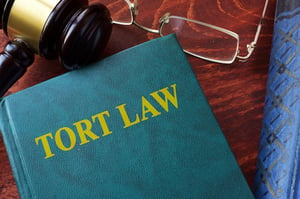Calculating Damages for Intangibles
 Financial experts need some predictable building blocks to construct a reliable estimate of lost profits or reasonable royalties in cases involving intangible assets. This article highlights the types of evidence and analysis that may be needed to support an estimate of damages in breach of contract, infringement, and other tort claims.
Financial experts need some predictable building blocks to construct a reliable estimate of lost profits or reasonable royalties in cases involving intangible assets. This article highlights the types of evidence and analysis that may be needed to support an estimate of damages in breach of contract, infringement, and other tort claims.
Consistency
Before the expert digs into the data, he or she reviews the plaintiff’s complaint, the defendant’s answer, and any additional or amended filings related to the case. This level of due diligence applies whether the plaintiff is seeking lost profits or reasonable royalties.
Providing your expert with these documents helps ensure the damages analysis and testimony align with your legal arguments. Specifically, you want the expert’s testimony to be consistent with your descriptions of the intangible asset, the damage-triggering event, the injury, and the damages period.
Projected vs. Actual Results
Lost profits are typically the remedy for breach of contract claims involving intangible assets, such as licenses or franchise agreements. Regardless of the method the expert uses to estimate lost profits, he or she will require historical, current, and prospective financial and operational data related to the intangibles.
Experts must compare historical financial projections with actual operational results to get a sense of how reliable the owner’s projections are. The damages estimate must be reasonable in light of historical results, production, or other constraints that might limit damages and the particular industry’s historical trends and outlook.
A qualified damages expert also will seek evidence of the plaintiff’s efforts to mitigate the damages. That includes documentation of the timing, cost, date, and effect of any mitigating measures.
Resources for Royalties
In intangible asset infringement cases, the most common remedy is reasonable royalties. But this form of economic damages also could apply in breach of contract and other tort claims. Reasonable royalty calculations require a wider scope of evidence than lost profits estimates.
All cases require the expert to consider historical, current, and projected financial and operational data, as well as the plaintiff’s mitigation efforts. But reasonable royalty estimates also must incorporate comparable asset licensing agreements, as well as factoring in the asset’s development costs and current market value.
Help Them Help You
The earlier you can supply your financial expert with the relevant information to perform their analysis, the better. It’s important to anticipate the types of data needed to support a lost profits or reasonable royalties estimate. That way, you can start gathering the information before you meet with your expert – and avoid the added cost and frustration that comes with waiting for missing documentation.








